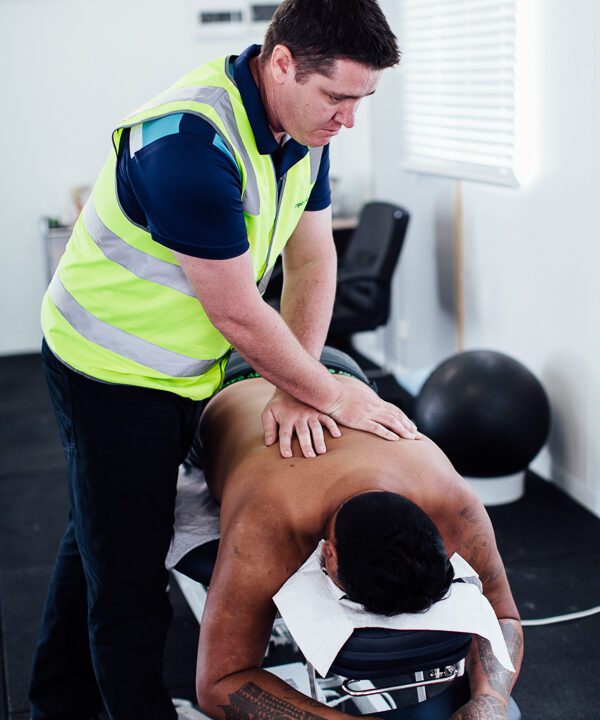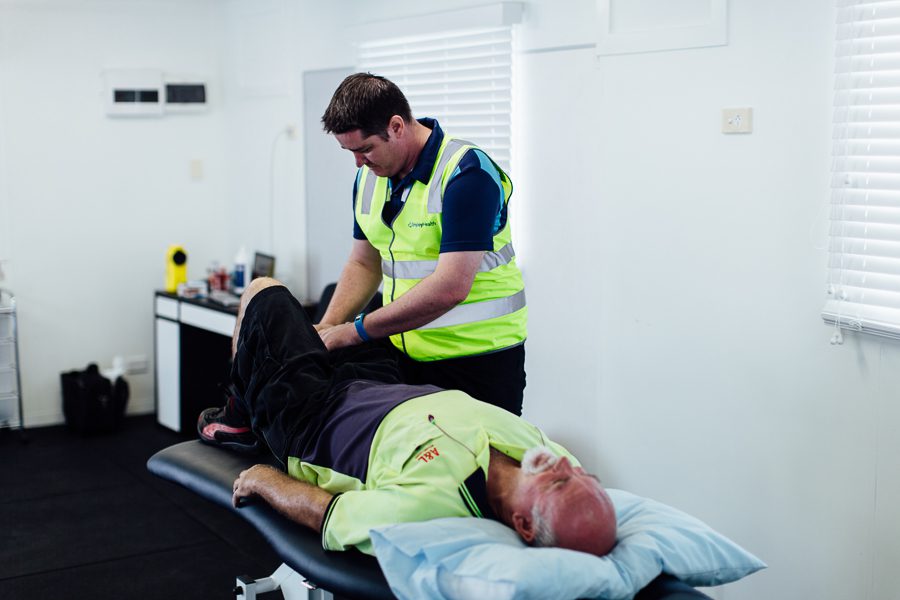Musculoskeletal disorders are a priority in managing workplace injuries as they often contribute to a large number of injuries and are preventable. Some businesses might be at higher risk of musculoskeletal injuries in the workplace with high levels of manual handling work and low opportunities for task rotation.

What Are Work Related Musculoskeletal Disorders?
Musculoskeletal conditions comprise more than 150 conditions that affect the locomotor system of individuals. They range from those that arise suddenly and are short-lived, such as fractures, sprains and strains, to lifelong conditions associated with ongoing functioning limitations and disability.
Musculoskeletal conditions are typically characterised by pain (often persistent) and limitations in mobility, dexterity and overall level of functioning, reducing people’s ability to work. Musculoskeletal conditions include conditions that affect:
- Joints, such as osteoarthritis, rheumatoid arthritis, psoriatic arthritis, gout, ankylosing spondylitis;
- Bones, such as osteoporosis, osteopenia and associated fragility fractures, traumatic fractures;
- Muscles, such as sarcopenia;
- The spine, such as back and neck pain;
- Multiple body areas or systems, such as regional and widespread pain disorders and inflammatory diseases such as connective tissue diseases and vasculitis that have musculoskeletal manifestations, for example systemic lupus erythematosus.
Musculoskeletal conditions are also the highest contributor to the global need for rehabilitation. They are among the largest contributors to the need for rehabilitation services among children and account for approximately two-thirds of all adults in need of rehabilitation.
Work-related Musculoskeletal Disorder Risk Factors
Certain workplace conditions, for example, the layout of the workstation, the speed of work (especially in conveyor-driven jobs), and the weight of the objects being handled influence these factors. In other situations, the psychosocial factors at the workplace may contribute to WMSDs. It is recommended that both physical and psychosocial factors be addressed.
- Work postures and movements.
- Repetitiveness and pace of work.
- Force of movements.
- Vibration.
- Temperature.
- Lack of influence or control over one's job.
- Increase pressure (e.g., to produce more).
- Lack of or poor communication.
- Monotonous tasks.
- Perception of low support (e.g., manager or co-worker).
Repetitive Strain Injury From Work
Repetitive movements are especially hazardous when they involve the same joints and muscle groups over and over and when we do the same motion too often, too quickly and for too long. Work involving movement repeated over and over is very tiring because the worker cannot fully recover in the short periods of time between movements. Eventually, it takes more effort to perform the same repetitive movements. When the work activity continues in spite of the fatigue, injuries can occur.
Workplace Posture
With more employees sitting longer at computers and other workstations, this is more important than ever to avoid chronic health issues. Ultimately, adjusting office ergonomics is a way to keep your employees safe. If your workers don’t have safe, effective equipment to work with — like a comfortable chair or a back brace — it can lead to a hurting, less productive employee.
Poor posture, in particular, can cause a multitude of health issues as it puts extra stress on joints and muscles. This leads to overwork and fatigue, which can cause chronic pain. As a result, musculoskeletal disorders (MSDs) may pop up — like tendonitis or carpal tunnel. These disorders can impact muscles, blood vessels, nerves, ligaments, and tendons.
Workplace Pressure
Pressure at the workplace is unavoidable due to the demands of the contemporary work environment. Pressure perceived as acceptable by an individual may even keep workers alert, motivated, able to work and learn, depending on the available resources and personal characteristics. However, when that pressure becomes excessive or otherwise unmanageable it leads to stress. Stress can damage an employees’ health and degrade business performance.
Lack Of Control At Work
Low job control can be characterised by situations where:
- Workers have little influence in how they meet work demands and how they perform their work in general. This might be described as a lack of 'autonomy'.
- There are unnecessary levels of supervision and surveillance.
- There is excessive responsibility with little authority or decision-making capability.
- There is little or no say in how work is done.
- Work is not meaningful and lacks variety.
- Workload or pace exceeds capacity or staffing resources
- Low control over workflow
Booking Form
Related Services
“Workplace Musculoskeletal injuries can occur due to both psychosocial and physical stresses, both of which need to be addressed through a holistic program.”
At Employ Health we offer a range of services which can assist with managing and preventing your workplace musculoskeletal injuries, below are a few examples:
 Task Specific Ergonomic Assessments
Task Specific Ergonomic Assessments
Ergonomic assessments can reduce the chance of injuries occurring, by ensuring that workers are using correct manual handling and ergonomic techniques. Often by addressing a workers movement habits or postures we can assist in offloading or correctly using particular muscles, which might be contributing to the musculoskeletal injury.
Read more
 Early Intervention Physiotherapy
Early Intervention Physiotherapy
Early intervention physiotherapy can assist in managing workplace musculoskeletal injuries by ensuring the correct Physiotherapy treatment and exercises are prescribed at the right time, ensuring workers duties are appropriate and non-aggravating, as well as working on prevention and functional strength with individuals
Read more
 Workplace Psychosocial Risk Assessments
Workplace Psychosocial Risk Assessments
Psychological risk assessment tools can be conducted by EmployHealth physiotherapists in order to assist in understanding where risk may be present and best address interventions.
Read moreFrequently Asked Questions
Musculoskeletal disorders can be prevented by ensuring improved work techniques and analysing tasks with risk assessments utilising the hierarchy of controls. Proper stretching and dynamic warm ups can assist with reducing injury, managing and intervening with injuries early on can assist in ensuring the proper recovery and preventing re aggravation. Education and manual handling training/office ergonomics can also assist in reducing injury rates.
Musculoskeletal injuries can be caused by a range of factors including bone fractures, joint dislocation (when something forces a joint out of its proper position), direct blows to muscles, bones or joints, overuse injuries, repetitive sprains and strains and poor posture.
- Tendinitis
- Lower back pain
- Carpal tunnel syndrome.
- Osteoarthritis.
- Rheumatoid arthritis.
- Bone fractures.
- Muscle / Tendon strain.
- Ligament Sprain
Musculoskeletal disorders can often lead to claims and reduce workers productivity and increase absenteeism.
